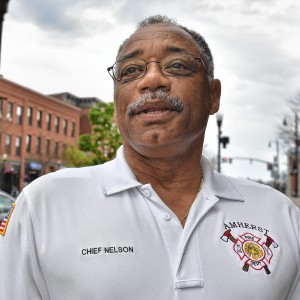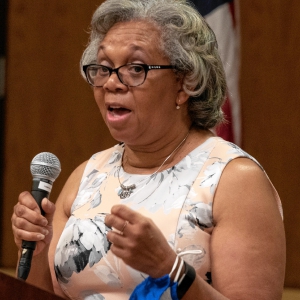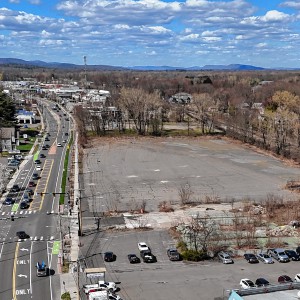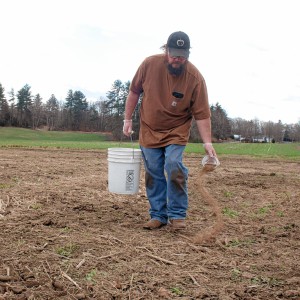Contra dancing: Where square meets swing
| Published: 01-25-2020 2:11 PM |
The sound of lively fiddle music filled the Pacific Lodge Masonic Hall on a recent Wednesday evening as caller Hannah Johlas directed the action through a microphone, telling the two dozen contra dancers to switch partners as they moved to the rhythm of the traditional folk music.
It’s a scene that takes place every week in downtown Amherst during the Downtown Amherst Contradance, which after a decade continues to attract new dancers every week, dance community organizers say.
Contra dancing is a traditional New England folk dance, which harks back to the 1700s with roots in English/Scottish country dance as well as French dance styles. Contra remains popular across the country, and the epicenter of the folk dance tradition is western Massachusetts — particularly in Greenfield, where Guiding Star Grange dances have been going on for decades.
“I went out to San Francisco and a friend of mine from here was like, ‘Oh, let’s go to a dance out here,’ ” said Steve Friedman, a volunteer with Downtown Amherst Contradance. “So we went to a dance and people asked me where I was from and I said, ‘Massachusetts.’ They were like, ‘Oh, do you know Greenfield?’ People from across the country are asking me about Greenfield.”
Friedman, like many contra enthusiasts, was introduced to contra dancing through a friend.
“It’s almost hard to put into words,” he explained. “I just fell in love with it. The music and the moving about and using your body and enjoying the company. There’s always live music and it’s not very difficult to do. I wasn’t very much of a dancer before this. They give you the moves, you slowly pick them up, and then everybody is very friendly. It’s very fun.”
Ron Blechner, an organizer with the Amherst Contradance, pointed out that contra dancing isn’t the same as square dancing. He described it as “if square and swing had a child.”
To Blechner, contra dancing is “an exercise I don’t hate,” with live music and a friendly, jovial and welcoming atmosphere for all, including the beginners often present at dances.
Article continues after...
Yesterday's Most Read Articles
Liz Nelson, another organizer with the Amherst contra dance, said she loves contra dancing because it’s accessible to so many people.
“There are people of all ages from 5 to 105 that dance contra,” she explained. “All genders. Physical disabilities. I know several that are vision impaired. We make it work because we want people to be able to enjoy this dance regardless of circumstance.”
Blechner said like many other modern contra dance gatherings, Downtown Amherst Contradance made the switch recently to gender-neutral terms for dancers. Rather than the traditional terms, they use “larks” instead of “gents” and either “ravens” or “robins” instead of “ladies.”
“It had been a priority to look at the younger generation being more queer inclusive and more queer in general and breaking down some of the gender tropes or stereotypes,” Blechner noted of the contra dance, which typically draws 30 to 50 dancers weekly. At times, he said, more than 100 people attend.
Rainbow Contra Dance of Western Massachusetts in Northampton is another dance event that’s gender inclusive. The dance takes place monthly at First Churches of Northampton and focuses on the LGBTQ+ community, as well as friends and allies.
Johlas, a 24-year-old graduate student at the University of Massachusetts Amherst, and the contra dance caller who introduced newcomers to the dance form beforehand at the Jan. 15 dance, has been a caller for at least a year and a half.
She moved to western Massachusetts from her home state of Minnesota to attend graduate school for mechanical engineering. Before moving, she had been to contra dances, but it wasn’t until she came to live in the Pioneer Valley that she started dancing more regularly.
The learning curve to become a caller, she said, “was a little bit steep at first, but I was lucky to take a workshop with more experienced callers, so they kind of showed me the ropes in a faster way,” she said.
For Will Anderson, 28, from Albany, New York, Jan. 15 was his first time joining the Amherst Contradance. He had contra danced for several years before and found it to be a fun experience.
“I think creative play among adults is in shortage these days,” he said. “I think it’s a really good opportunity for that.”
The robust and energetic fiddle of Cecilia Vacanti played alongside the piano and percussive drumbeats/bass synthesizer of Jeff Kaufman that night, performing as Kingfisher.
“The caller will choose dances and it’s our job to pick things to play that will support that dancing, but we have a pretty good idea of the sort of things the caller is likely to ask for,” noted Kaufman, who also plays mandolin. “They’re going to want some energetic things and some that are sweet and calm, and other things that are more groovy.”
Graham Skorupa, a 20-year-old from Wendell who attended the mid-January dance in Amherst, grew up playing contra dance music with his brother on piano and father on flute and guitar in the Noah’s Raven Dance Band. His mother is also a contra dance caller.
“Lately, over the past half a year, I’ve been getting into dancing contra,” he said. “I love this contra dance so much. They’re so friendly and so welcoming. There’s dancers of all skill levels. Everyone has a really good time … It’s a combination of some many different cultures and constantly rebuilding itself. It’s always staying new, but timeless.”
For more information about the Downtown Amherst Contradance visit amherstcontra.org/Amherst_Contradance/Home.html. To learn more about other contra dances such as the Rainbow Contra Dance of Western Massachusetts, visit alongtheriver.com/dances.phtml.
Chris Goudreau can be reached at cgoudreau@gazettenet.com.

 Amherst Fire Chief Walter ‘Tim’ Nelson to retire in June
Amherst Fire Chief Walter ‘Tim’ Nelson to retire in June First look at how little Amherst’s police alternative being used called troubling
First look at how little Amherst’s police alternative being used called troubling Petition to block auto dealership on King Street falters in Northampton
Petition to block auto dealership on King Street falters in Northampton  LIME SPREADER
LIME SPREADER
